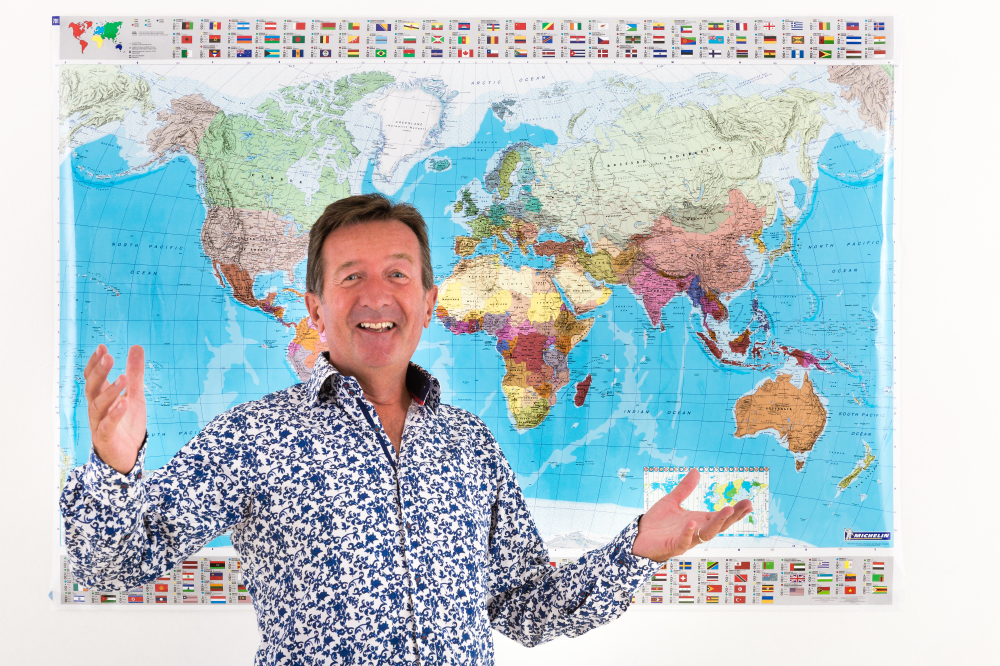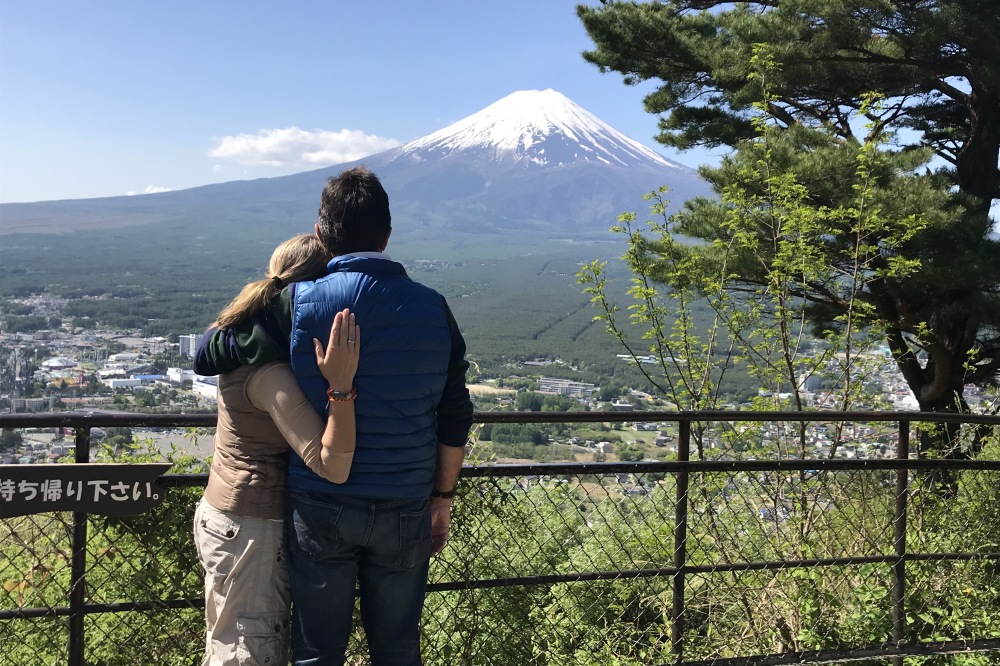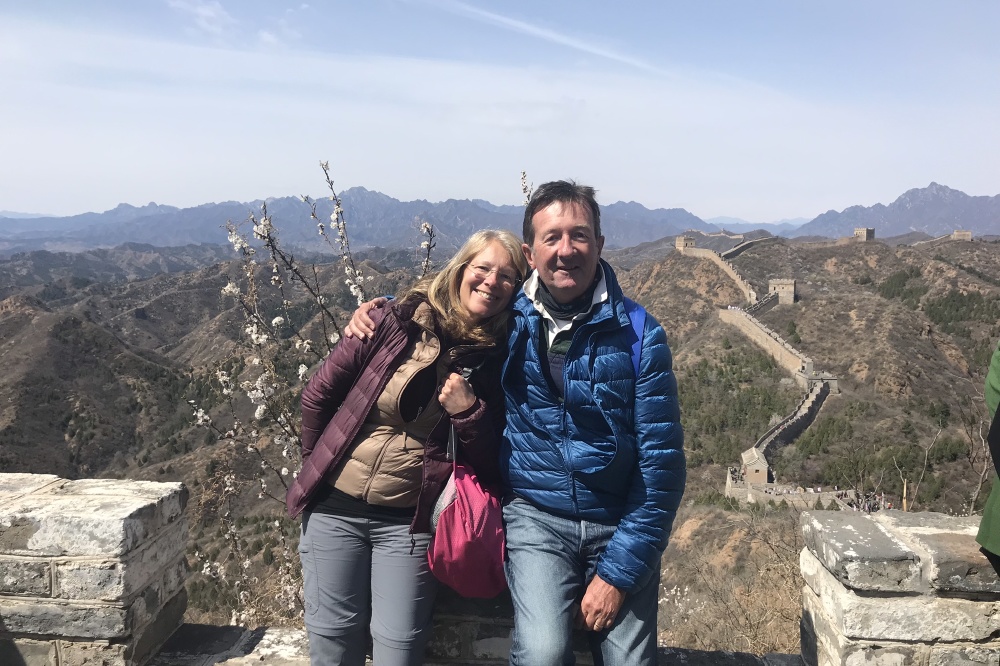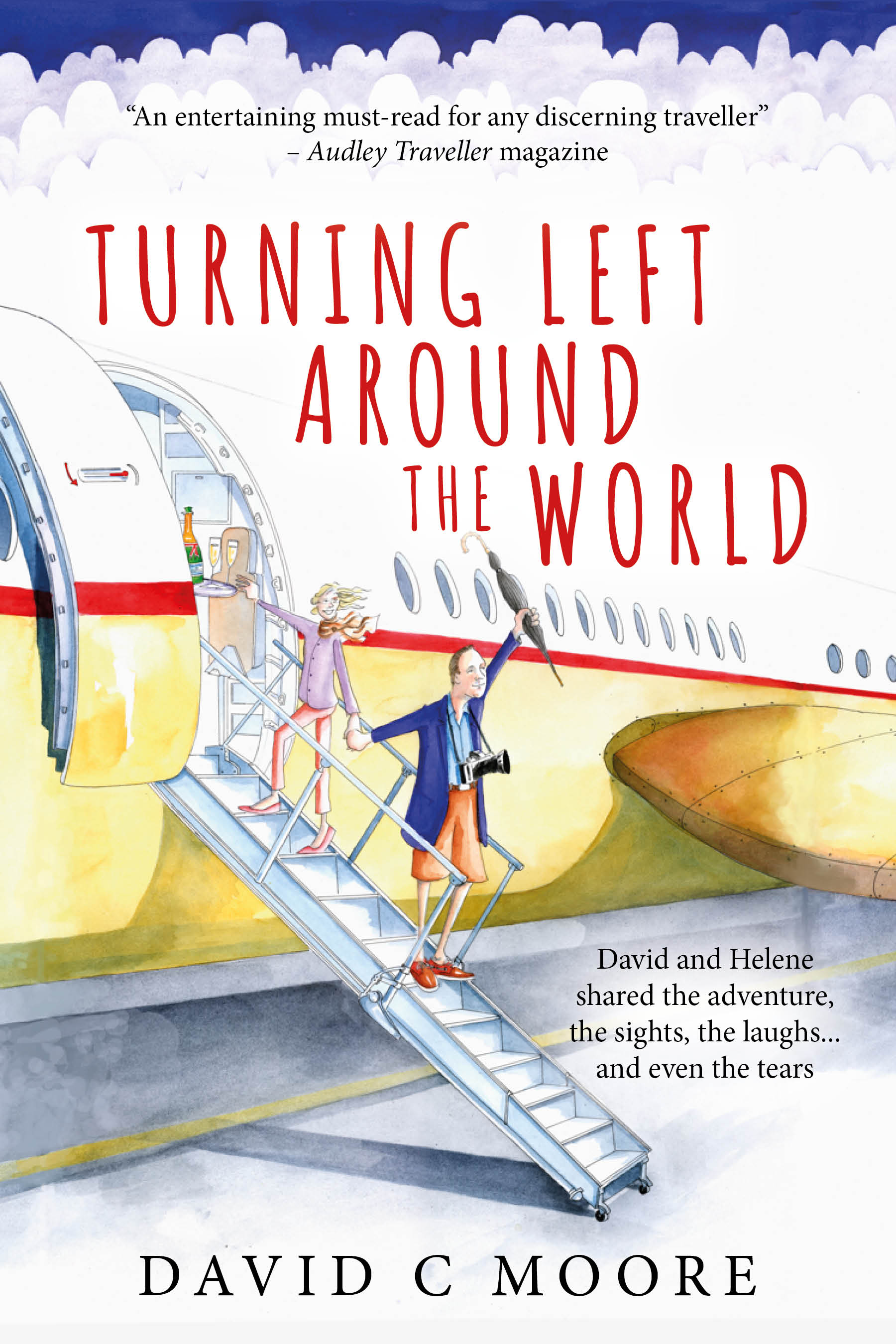I may be considered a ‘late gap-year globe trotter’ but my wife Helene decided we were not to limit our wanderings to the golf course so she began planning a once-in-a-lifetime holiday. Her dream was lots of adventure, plenty of access to the culture of the indigenous people, time in deserts, rainforests and jungles, with big cities in-between.

David C Moore writes for Female First
So, we traded in our golf buggy for 53 flights, 30 trains, 8 boats, 3 cruise ships, 1 light aircraft, 1 hot air balloon, a motorbike and sidecar, countless speedboats, taxis, tuk-tuks, cyclos, and bicycles. And a disobedient horse.
Neither Helene nor I took a year off before or after university to discover the world, and we certainly weren’t going to start backpacking now. But where do we start? How do we plan it? Where shall we go? How much will it cost? And, as we are often asked, will we still be talking to each other at the end of it? Helene had a plan...
1. Buy the largest map you can find
We agreed on a strategy that was not to include any locations we had previously visited, which immediately excluded most of Europe, Scandinavia and some of the US, and our research began.
I have to say it was a lot of fun. Helene revisiting the ten years of Traveller magazine back issues she had accumulated and me working out where and when the Rugby Sevens, Ashes and British Lions tours may be.
Helene brought home a giant map of the world with a box of blue pins for me and pink for her and the instruction to ‘put the map up and start sticking pins in the places you’ve always wanted to go.’
A few weeks later we stood together examining our work, the map of the world was littered with the colourful pins, surprisingly most were in pairs of blue and pink.
2. Find a specialist who understands your purpose, your dream and you
What remained seemed like the Rubik’s cube of holiday planning, even with Helene’s six foot tower of Traveller magazines we would struggle to solve the flights, accommodation and “must-sees” conundrum. We needed to search for a specialist who understood our purpose, our dream and us. We found Audley Travel – for the discerning traveller.
What a splendid approach they take. Before any discussion around the route and destinations they spent time getting to know our likes and dislikes before tailoring an itinerary specifically for us.

3. Budget by country
With prices for accommodation and food varying alarmingly across our chosen 15 countries it was never going to be a case of simply multiplying the 10 months by an approximate daily cost for a hotel, food and drink , it required research, a lot of research.
Our approach was to calculate a daily allowance for each country and hope that we had covered the incidentals; entry fees, guides, guides tips, gifts to send home, gifts to keep, the list seemed endless. We arrived at a budget, added a 10% contingency and began investigating the cost of flights.
4. Buy an around the world air ticket
The OneWorldExplorer tickets we selected to travel around the world for 10 months are surprisingly inexpensive. There are restrictions of course; you have to travel the same way and they generally do not include internal flights. However, they are so cost effective we were able to upgrade to a Business Class ticket and turn left around the world.

5. Pack for the weather and the culture
Whilst our plan was robust in attempting to follow the sun west, accurate it was not; we simply couldn’t predict changing weather; it rained on the Sunshine Coast, a trip to the Atacama Desert at sunrise was -14°C and it was well over 35°C in Vietnam.
The challenge is that most internal flights in most countries limit you to 23 kg – not a lot for a 10 month wardrobe. So, clothes for cold weather were required in small quantities and were either left in storage or sent home once they were done with.
Equally, it is important to be culturally appropriate, a longyi is a must for the men visiting the Southeast Asian temples to cover their knees and ladies have to cover their shoulders.
6. Be prepared for the unexpected
The Great Wall and the Terracotta Army in China were magnificent, Ayers Rock and Mount Fuji were breathtakingly beautiful, while the Galápagos Islands and Amazon Jungle exceeded our expectations in being up close and personal with the wildlife.
But it was also the unplanned experiences that we have fond memories of. This means having some flexibility in your plan for when a local in Mandalay invites to meet his family for supper, a teacher at a school on a Fijian island asks you to take an English lesson or a dinner with a friendly couple results in meeting with the Australian Prime Minister who offers a great story for the book.
7. Speak to the locals... and each other!
You can read every guide book or hire a local guide but always speak to the locals, they were happy to help with a story about their culture or history and a recommendation to visit sights off the beaten track.
At the end of each day we would swap our ‘bestest bits’ – a family tradition going back to when we holidayed with the kids – and discuss our experiences. They were always intriguing, frequently funny and occasionally tragic so there was a lot of laughter and sometimes a few tears.
But we learned that although we will never be the intrepid explorers we sometimes thought we were, we can actually take on a lot more together than we thought we could.
Are we still talking to each other after 10 months travelling together? Of course we are, there’s a lot to talk about, especially as Helene’s just bought another huge map.
-

David C Moore is the author of Turning Left Around the World published by Mirador. It is an entertaining account of their adventure, often intriguing, frequently funny and occasionally tragic. Share their adventure, enjoy the surprises and meet some fascinating people along the way. Available now on Amazon.
Tagged in Travel

